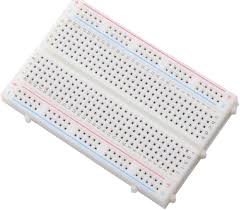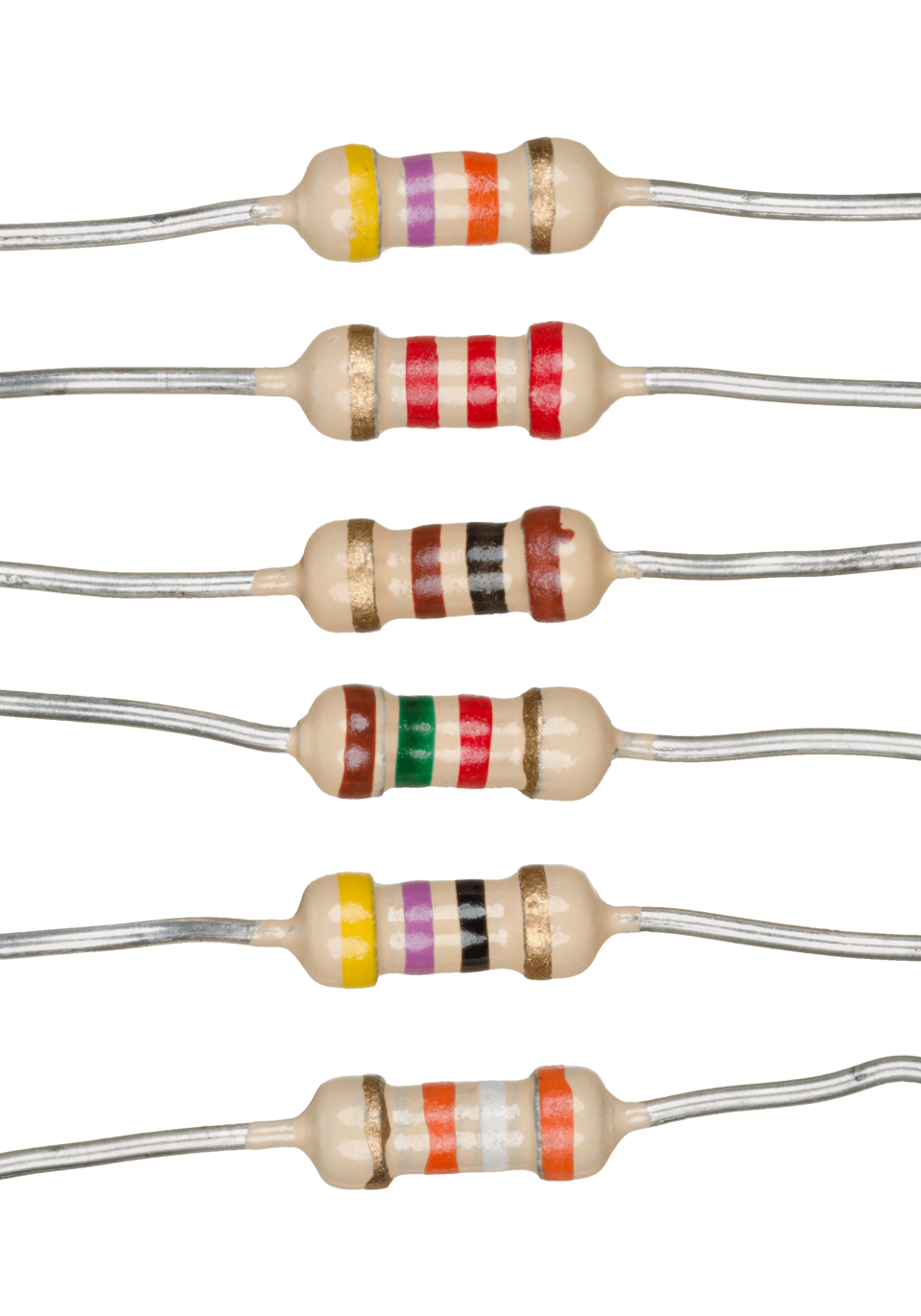Robotics Final
1/26
There's no tags or description
Looks like no tags are added yet.
Name | Mastery | Learn | Test | Matching | Spaced |
|---|
No study sessions yet.
27 Terms

Breadboard
a construction base for prototyping electronics

Resistors
are components used to limit current flow and divide voltages in electronic circuits.
Jumper wires
electrical wires with connector pins at each end, use these to connect components to each other on the breadboard, and to the Arduino
LED (Light Emitting Diode)
A type of diode that illuminates when electricity passes through it. Like all diodes, electricity only flows in one direction through these components. You’re probably familiar with these as indicators on a variety of electronic devices. The anode, which typically connects to power, is usually the longer leg, and the cathode is the shorter leg
Capacitors
These components store and release electrical energy in a circuit. When the circuit’s voltage is higher that what is stored in the capacitor, it allows current to flow in, giving the capacitor a charge. When the circuit’s voltage is lower, the stored charge is released. Often placed across power and ground close to a sensor or motor to help smooth fluctuations in voltage.
Transistors
A three legged device that can operate as an electronic switch. Useful for controlling high current/high voltage components like motors. One pin connects to ground, another to the component being controlled, and the third connects to the Arduino. When the component receives voltage on the pin connected to an Arduino, it closes the circuit between the ground and the other component.
Servo Motor
A type of geared motor that can only rotate 180 degrees. It is controlled by sending electrical pulses from your Arduino. These pulses tell the motor what position it should move to.
DC Motor
Converts electrical energy into mechanical energy when electricity is applied to its leads. Coils of wire inside the motor become magnetized when current flows through them. These magnetic fields attract and repel magnets, causing the shaft to spin. If the direction of the electricity is reversed, the motor will spin in the opposite direction.
Diode
A semiconductor device that allows current to flow in one direction only, typically used for rectification.
MOSFET transistor
A type of transistor that uses an electric field to control current flow often used for switching and amplifying signals
Optocoupler
an electronic component that transfers electrical signals between two isolated circuits by using light
Piezo capsule
An electrical component that can be used to detect vibrations and create noises.
Potentiometer
A device used to measure the voltage or potential difference in an electric circuit by varying resistance. It allows for precise adjustments that enable the control of voltage levels.
Photoresistor
A passive component that decreases resistance with respect to receiving luminosity on the component’s sensitive surface.
Ohm’s Law
Voltage = Current * Resistance
Electron
part of an atom, can move between atoms, sits outside nucleus
Free Electrons
can move between atoms with ease, can detach from their atoms and zip around
Conductor
Materials that electrons can move through easily, electrons can freely move around nucleus, can go somewhere else
Insulator
Materials that electrons can NOT move through easily, electrons are not freely moving
Circuit
racetrack of conductive materials that lets electrons flow in a certain way, between the two terminals, positive and negative
Watt
unit of measurement for electricity consumed that is equivalent to 1 joule per second
Ohms
Unit of measurement for resistance
Resistance
A restriction to the flow of electrons within a circuit measured in Ohms
Voltage
electrical pressure that pushes the electrons through a circuit
Current
number of electrons in motion in a circuit
Ampere
unit of measurement for current 1 amp (ampere) = 1 coulomb
Volts
Unit of force that measures pushing force of electrons in a circuit (voltage)